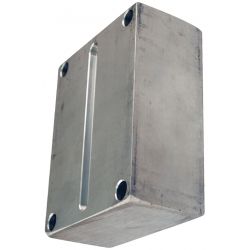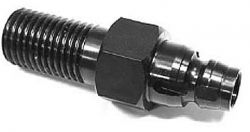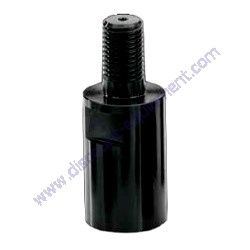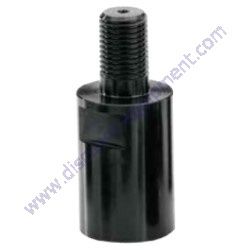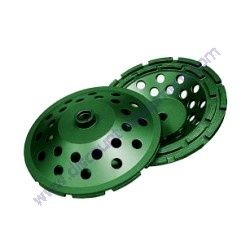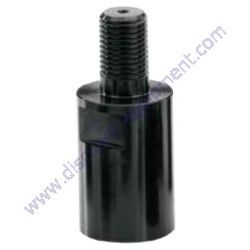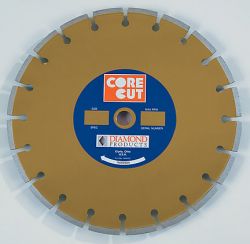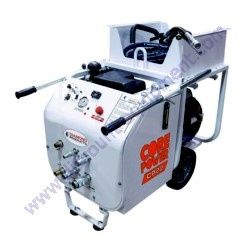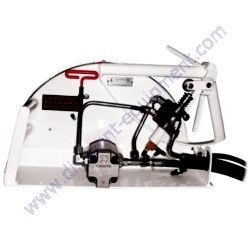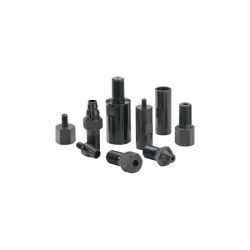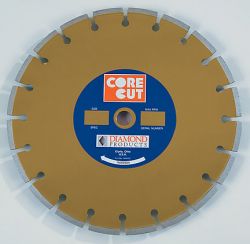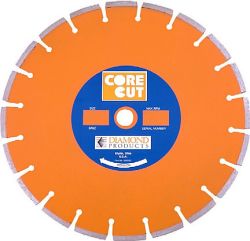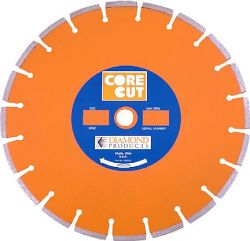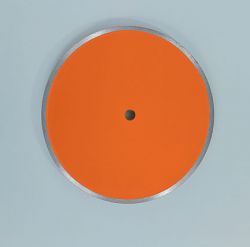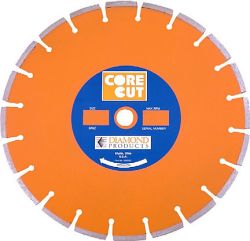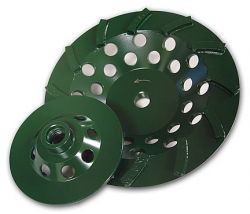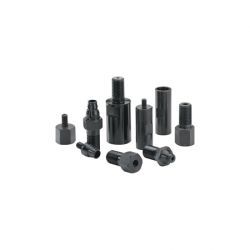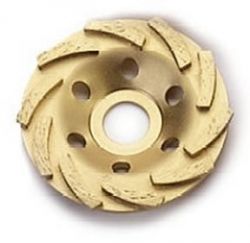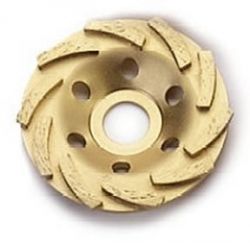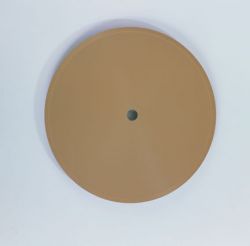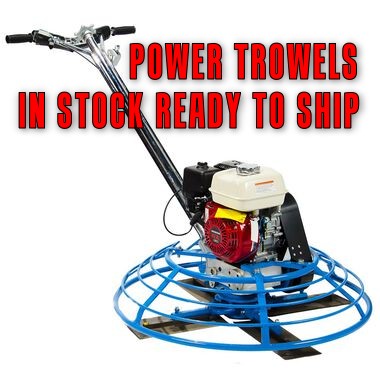Diamond Products 5800854 Saw Hand Flush Cut Hydraulic 8GPM, Pro Series HSFC25 c/n 08693
Safety Information
Diamond Products 5800854 Pro (8GPM) Flush Cut Hydraulic Hand Saw HSFC25
HAND SAW SAFETY WARNINGS
PERSONAL SAFETY
• Read and completely understand instructions before operating saw.
• DO NOT operate saw under the influence of drugs or alcohol.
• Always wear safety approved hearing, eye, head and repertory protection.
• Sturdy boots with non-slip soles aid in providing proper footing. Use of steel-toed safety boots is recommended.
• Under certain conditions sparks may fly, therefore never wear clothes made of flammable material or operate near flammable items.
• Know how to stop the saw quickly in case of emergency.
• Keep all parts of your body away from the blade at all times, blades are sharp and can cause serious injury or death.
• Do not use hands to search for hydraulic leaks, fluid escaping under pressure can penetrate skin and cause severe injury. If any fluid is injected into the skin, seek medical attention immediately.
• Wear heavy work gloves to avoid contact with concrete slurry, which can cause serious skin irritation.
BLADE SAFETY
• Examine cutting blades before each use. Blades should have no cracks, nicks, or flaws. Center hole should be undamaged as well. Use only blades recommended for your model.
• This saw should cut only material that is specified on each cutting blade. Read instructions which are located on
the blade to determine which material the blade is designed to cut.
• Use only steel centered diamond blades manufactured for use on concrete cutting hand saws DO NOT use highspeed steel blades, carbide tipped blades, or abrasive blades.
• Inspect blade flanges for damage, excessive wear, and cleanliness before mounting blade. Blades should fit snugly on clean, undamaged shaft.
• Use only blades marked with a maximum operating speed greater than the blade shaft speed.
• DO NOT remove flow control form hydraulic circuit. Do NOT exceed the maximum safely allowable speed. DO NOT operate this equipment if you suspect it of exceeding this speed.
GENERAL SAW SAFETY
• Always relieve all pressure before disconnecting hydraulic hoses. DO NOT apply pressure to damaged hoses or fittings.
• Always remember to keep both hands on the handles when the saw is running.
• Never leave the saw unattended with the hydraulic hoses connected to power unit.
CUTTING/WORK AREA SAFETY
• Never operate the saw in any application or job where you are not trained or supervised.
• Operate only in well ventilated areas.
• Keep bystanders and or animals out of work area.
• DO NOT operate the saw in areas of combustible materials or fumes. Sparks may occur from blade that could cause a fire or explosion.
• Know the material and work area you are sawing. Hazardous conditions such as live electric, water, or gas lines can be concealed in material.
Warning
The engine exhaust from this Product contain chemicals known to the State of California to cause cancer, birth defects or other reproductive harm
Warning
FAILURE TO COMPLY WITH THE PRECEDING WARNINGS COULD RESULT IN SERIOUS BODIILY INJUST OR DEATH!
HAND SAW OPERATING PROCEDURES
Blade Mounting
• Be certain that you have correct diamond blade for the application. Contact Discount-equipment for the correct specification. Ensuring that the correct blade is used will greatly increase performance and durability of blades resulting in cost savings.
• The blade shaft flanges and arbor must be inspected for damage and cleaned before mounting the blade. If damaged, replace worn or broken parts. Inspect blade for damage to arbor hole and flange area before attempting to mount blade.
• Make sure the arrow on the blade is pointing in the proper direction of rotation. The drive pin in the outer blade flange must go completely through the blade into the matching hole in the inner blade flange. Using the wrench provided, tighten flanged nut securely (Approximately 30 ft. lbs.). Note that the flanged nut has left hand threads,
which tighten by turning counter clockwise.
BEFORE SAWING
• Do not use conventional (wet) diamond blades without water. You must have 2.5-5 gallons of water per minute flowing over the blade for proper cooling and ensuring proper blade life. For wet sawing, be sure to spray holes in the water manifold are open and each side of the blade receives adequate water flow.
• Test your water supply for pressure and flow rate before starting saw.
• Mark the cutting line clearly so that the saw operator can follow the line without difficulty.
CUTTING THE LINE
• With the saw blade above the cut, squeeze the trigger to start the water flowing and allow the saw blade to reach the desired speed before the blade contact the surface. Pivot the saw on the front roller and slowly lower the
blade into the cut line. Do not exceed more than 2.00” cutting depth per pass. At the end of the cut, pivot the saw on the front roller and raise the blade until it clears the cut, then release the trigger. Allow the blade to come to a
stop before setting down. Increase the depth of cut by 2.00” by increasing the blade diameter and follow the previous cut line. This procedure is known as step cutting. Continue with this procedure in 2.00” increments until you have reached your desired depth of cut.
• When cutting vertical wall cuts, start from the top working down. Make the first pass shallow, being extra careful not to go off the cut line. Increase cut depth with each pass following the previous cut. If the first cut starts to
wander, stop sawing and correct the cut by plunging a straight and deeper cut before and after the error. After this go back with the blade cutting twice the depth of the error and cut between the two using the blade to guide past
the error.
• Horizontal cuts are the most difficult to make correctly. Before starting the horizontal cut, make sure there is enough room for you to work without reaching beyond your area of control. When sawing from a lift or scaffolding,
always figure the amount of hoses you will need to tie off. Leave only what you need for the job.
HAND SAW MAINTENANCE INSTRUCTIONS
• Check all hydraulic hoses and connections daily. Any leakage of hydraulic fluid will require immediate retightening or replacement of parts. When replacing hydraulic components use only parts with proper pressure ratings.
• Tighten fasteners occasionally. Nuts and bolts may become loose particularly after the first few hours of use.
• Check hydraulic supply for correct pressure and flow rate that is appropriate for your saw, all saw have a GPM rating decals.
• Clean saw by removing all accumulated dust or slurry after use. If allowed to dry, the slurry will harden and could impair efficiency and performance.
• Inspect the blade guard frequently for damage and wear. Concrete slurry can erode the aluminum in the blade guard. If any portions of the blade guard measures less than 3/16” (.187) discard unit. | 
